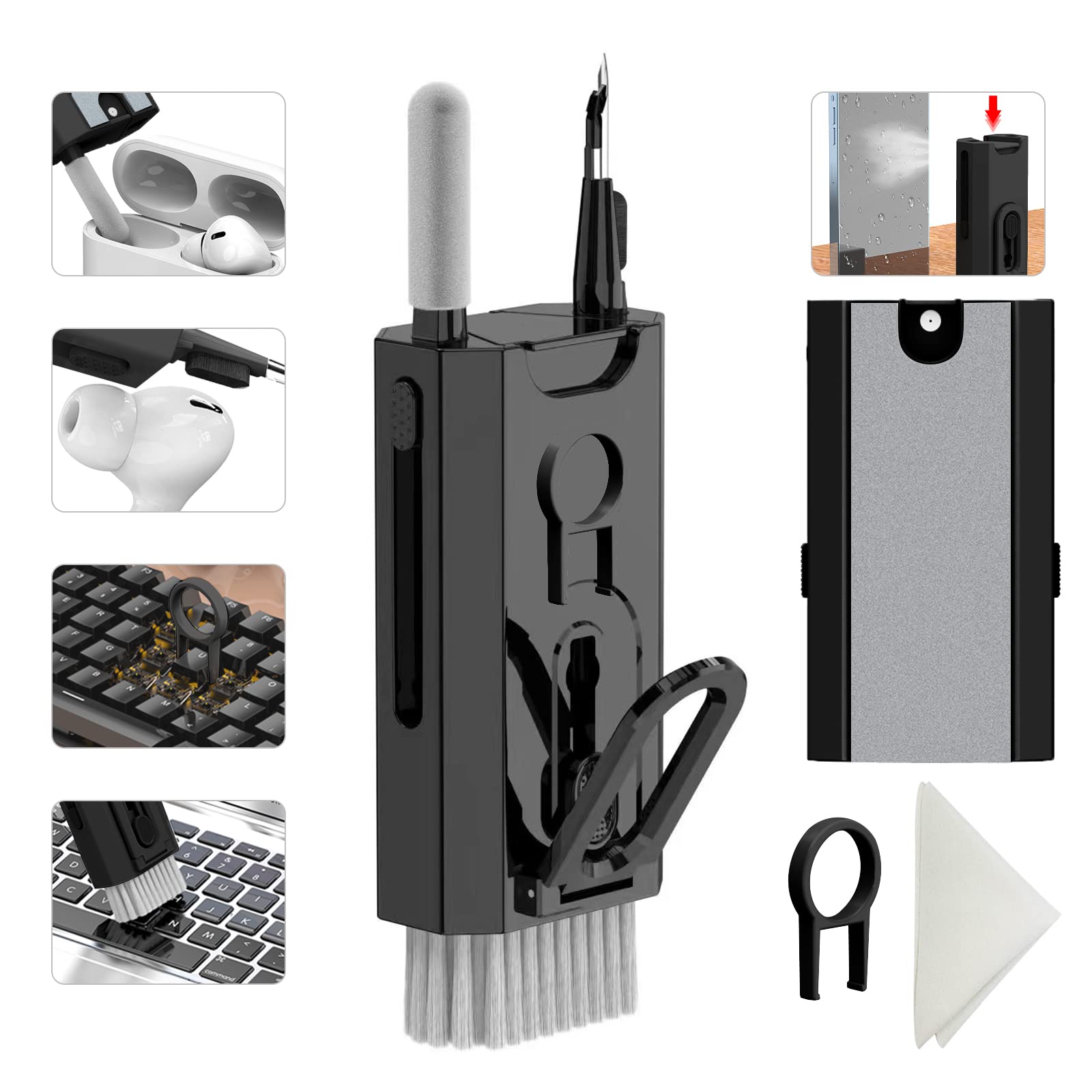Having laptop buttons that are not working can be frustrating and hinder productivity. In this article, I will provide effective solutions to fix this issue.
Power Reset Your Device
![]()
If your laptop buttons are not working, a power reset can often help resolve the issue. This simple step can refresh the system and fix any glitches that may be causing the problem.
To power reset your device, follow these steps:
1. Shut down your laptop. Go to the Start menu or press the power button and select “Shut Down” from the menu.
2. Disconnect the power source. Unplug the charger from your laptop and remove the battery if it’s removable. This will ensure a complete power reset.
3. Press and hold the power button. Hold down the power button for about 15-20 seconds. This will discharge any remaining power in the system.
4. Reconnect the power source. Plug the charger back into your laptop and insert the battery if you removed it.
5. Power on your laptop. Press the power button to turn on your laptop. Allow it to boot up completely.
After performing a power reset, check if the laptop buttons are now working properly. If not, there may be other underlying issues that require further troubleshooting or professional assistance.
Update Keyboard Drivers
1. Open the Start menu and search for “Device Manager” to open the Device Manager window.
2. In the Device Manager window, expand the “Keyboards” category to see the list of keyboards connected to your laptop.
3. Right-click on the keyboard that is not working properly and select “Update driver” from the context menu.
4. Choose the option to automatically search for updated driver software. Your computer will now search for the latest driver for your keyboard online.
5. If a newer driver is found, it will be downloaded and installed automatically. Follow any on-screen instructions if prompted.
6. Once the driver update is complete, restart your laptop to apply the changes.
7. After the restart, test the keyboard buttons to see if they are functioning properly now.
If updating the driver doesn’t fix the issue, you can try the following troubleshooting steps:
1. Check for any physical damage or dust on the keyboard. Use compressed air to clean out any debris that may be causing the buttons to malfunction.
2. If you are using a laptop, try connecting an external keyboard to see if the issue is with the laptop’s keyboard itself or with the drivers.
3. Uninstall any third-party software components that may interfere with the keyboard functionality.
4. If the problem persists, you can try a system restore to a previous working state or consider seeking professional assistance.
Inspect for Hardware Issues
1. Check for visible damage: Examine the laptop buttons for any visible signs of damage, such as cracks or loose connections. If you notice any physical damage, it’s likely the cause of the problem.
2. Clean the buttons and keyboard: Dust and debris can accumulate over time, causing buttons to become unresponsive. Take a soft cloth and gently clean the laptop buttons and keyboard. Do not use any liquids or harsh cleaning agents that may damage the buttons or keyboard.
3. Test the buttons: Press each button individually to see if they respond. Pay attention to any buttons that feel sticky or require more force to register. This could indicate a mechanical issue that needs to be addressed.
4. Check the keyboard layout settings: Sometimes, laptop buttons may not work properly due to incorrect keyboard layout settings. Go to the keyboard settings in your operating system and ensure the correct layout is selected.
5. Update the device drivers: Outdated or incompatible device drivers can cause button malfunctions. Visit the manufacturer’s website or use a trusted driver update tool to check for and install any available driver updates for your laptop.
6. Use an external keyboard: If the laptop buttons still don’t work after the above steps, try connecting an external keyboard to your laptop. If the external keyboard functions properly, it suggests a hardware issue with the laptop’s built-in keyboard.
Clean Keyboard for Hidden Dirt and Spills

- Step 1: Shut down the laptop and disconnect it from any power source.
- Step 2: Turn the laptop upside down and gently shake it to dislodge any loose debris.
- Step 3: Use compressed air or a small vacuum cleaner to remove dust and dirt from between the keys.
- Step 4: Dampen a lint-free cloth or cotton swab with isopropyl alcohol or a mild cleaning solution.
- Step 5: Gently wipe the keys and the surrounding area to remove any sticky residue or spills.
- Step 6: Pay extra attention to any non-responsive keys and clean them more thoroughly.
- Step 7: Allow the keyboard to dry completely before reattaching the power source and turning on the laptop.
Adjust Sensitivity Settings
Adjusting sensitivity settings can help resolve laptop buttons not working issues. To do this, follow these steps:
1. Open the “Settings” menu on your laptop. This can usually be accessed through the Start menu or by clicking on the gear icon in the taskbar.
2. Look for the “Devices” or “Mouse” option in the Settings menu and click on it.
3. In the Devices or Mouse settings, locate the section that pertains to the touchpad or trackpad. This may be labeled differently depending on your laptop model.
4. Adjust the sensitivity settings for the touchpad or trackpad. Some laptops may have a slider that you can move to increase or decrease the sensitivity. Others may have a drop-down menu with options like “Low,” “Medium,” or “High.” Experiment with different settings to find the one that works best for you.
5. Apply the changes and test the laptop buttons. If the buttons are still not working properly, you may need to adjust the sensitivity settings further or try other troubleshooting methods.
Remember to save any changes you make before exiting the Settings menu.
Reconnect the Motherboard
1. Power off your laptop and unplug it from any power source.
2. Remove the battery from your laptop if it’s removable.
3. Locate the screws that secure the bottom cover of your laptop and use a screwdriver to remove them.
4. Gently remove the bottom cover to expose the internal components, including the motherboard.
5. Locate the ribbon cable that connects the motherboard to the keyboard.
6. Carefully disconnect the ribbon cable from the motherboard by gently pulling it out of the connector.
7. Inspect the ribbon cable and the connector on the motherboard for any visible damage or dirt.
8. If there is dirt or debris, use a can of compressed air to clean the connector and the cable.
9. Reconnect the ribbon cable to the motherboard by aligning the pins with the connector and pushing it in firmly.
10. Replace the bottom cover of your laptop and secure it with the screws.
11. Reinsert the battery and plug your laptop back into the power source.
12. Power on your laptop and test the buttons to see if they are now working.
If the buttons still don’t work after reconnecting the motherboard, it may indicate a deeper issue with the hardware or software. In such cases, it is recommended to seek professional help or contact the manufacturer for further assistance.
Change Keyboard Layout
To change the keyboard layout on your laptop, follow these steps:
1. Open the Start menu on your computer by clicking on the Windows icon in the bottom left corner of your screen.
2. Type “Keyboard settings” in the search bar and select the “Keyboard settings” option from the search results.
3. In the Keyboard settings window, click on the “Language” tab.
4. Under the “Preferred languages” section, click on the language you want to use for your keyboard layout.
5. Click on the “Options” button next to the selected language.
6. In the Language options window, click on the “Add a keyboard” button.
7. A list of available keyboard layouts will appear. Select the layout you prefer, such as QWERTY or AZERTY.
8. Click on the “Preview” button to see a visual representation of the selected keyboard layout.
9. Once you have chosen the desired layout, click on the “Apply” button to save the changes.
10. Close the Keyboard settings window.
FAQs
Can you accidentally lock your keyboard?
Yes, it is possible to accidentally lock your keyboard. This can happen if you unintentionally press a key combination that triggers your keyboard to hibernate, particularly on a laptop. Additionally, your keyboard may not be securely connected to your system, which can also cause it to freeze or lock.
Why can’t I type on my laptop keyboard?
You may not be able to type on your laptop keyboard due to various reasons. First, try restarting your laptop as it can often solve the issue. Additionally, check your keyboard settings to ensure that the correct language and layout are selected. If there is dust or debris on your keyboard, it may be affecting its performance.
Why is a button on my laptop not working?
A possible reason for a button on your laptop not working could be physical damage to the keyboard caused by spills, drops, dust, or wear and tear. Signs of hardware issues may include stuck, loose, or missing keys, as well as keys producing incorrect characters or no response.
What to do if laptop keys are not working?
If laptop keys are not working, you can try the following steps:
Check for a driver issue that may be causing the unresponsiveness.
Inspect the motherboard for any potential problems.
Clean the keyboard to remove any dirt or spills that could be affecting functionality.
Adjust the sensitivity settings of the keyboard.
Remove the battery and reconnect the motherboard.
Consider updating the keyboard drivers or changing settings.

